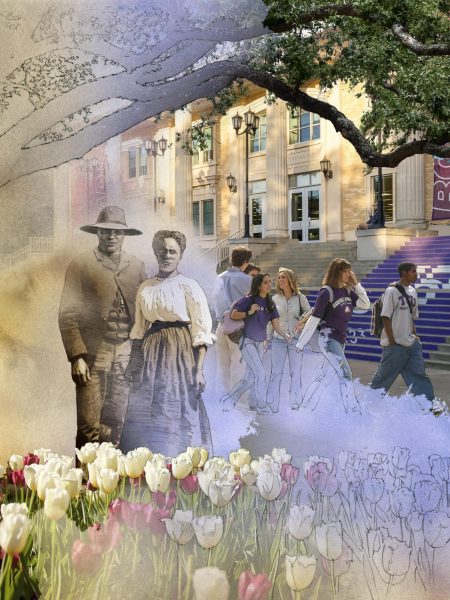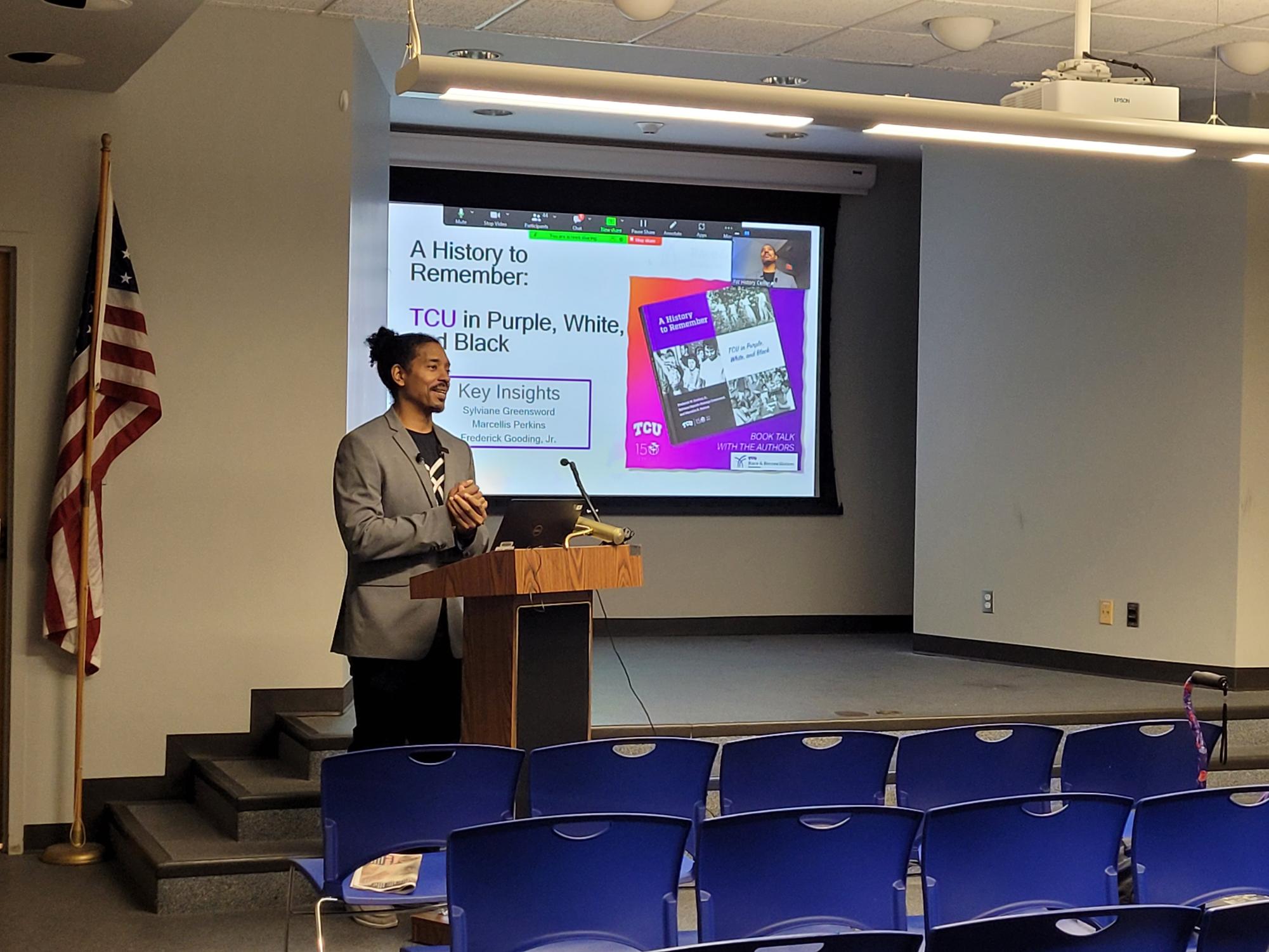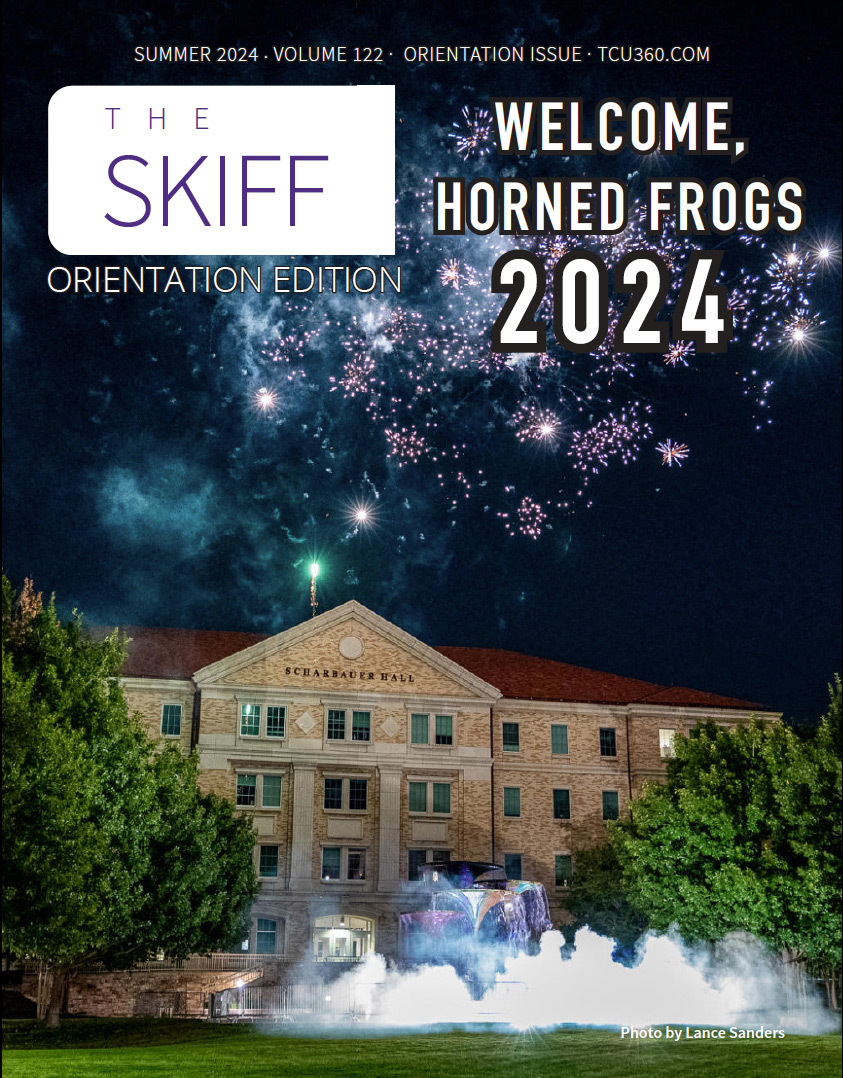Authors of the first book dedicated to Black history at TCU highlighted the unrecognized Black figures and stories of TCU in their presentation at the Fort Worth Public Library on Feb. 3.
Frederick Gooding Jr., PhD, and Marcellus Perkins, two of the three authors of “A History to Remember: TCU in Purple, White, and Black,” presented the stories of little-known employees like the former enslaved couple Charley and Kate Thorp, and the Jarvis family’s connection to Black education and history in east Texas.
The largely white and elderly audience most commonly answered Gooding’s question that Black history at TCU began in the integration period.
However, they soon learned about Black people that were seen as critical to building TCU into the institution it is today.

Charley and Kate Thorp worked at TCU during the school’s early years after its founding. Addison and Randolph Clark, TCU’s founders, viewed the couple as an “indispensable duo over this period,” Perkins said.
Perkins continued by noting that TCU has grown to national prominence considerably over the past year, but stories and people like these have yet to receive a significant spotlight.
“People all over the globe know the name of TCU, but they don’t know the names of the Thorps,” Perkins said.
The presentation illustrated the importance of understanding a complex racial history that TCU and its most prominent figures are a part of.
Major J.J. Jarvis, the first chairman of the board of trustees at TCU, and his wife Ida Van Zandt Jarvis are one of the many examples of the complexity and overlooked history of TCU. Jarvis Hall is named for the two.
Ida Van Zandt Jarvis, a slave owner, donated the land for the HBCU Jarvis Christian College as a gesture for the Black Disciples of Christ community in east Texas.
Perkins noted the reasoning for the school’s campus not being in Fort Worth where Jarvis lived.
“We don’t want to discount the act of building this college for the Black Disciples of Christ Community, but it’s also important to know that in Richard Selcer’s Fort Worth History in Black and White, it’s documented that the school was placed in east Texas because Jarvis didn’t want hordes of negroes coming to Fort Worth,” Perkins said.
Though TCU’s racial history is complex and at times dark, Gooding emphasized the importance of recognizing these stories and events for the school’s future.
“While talking about race and racism can be awkward, it behooves us to tell the truth,” Gooding said. “In 2023, TCU was one of five universities nationwide to win the John W. Nason Award for commissioning the Race and Reconciliation Initiative.”
Perkins echoed the importance of these efforts as it has led to proper recognition of under-appreciated figures, through the portrait project. This project diversifies the portraits of contributors to TCU.
“When you look at these portraits, you’ll see an absence of diversity, so the portrait project is used to diversify the narrative of who contributed to TCU through portraiture,” Perkins said. “We have the distinct honor and privilege of erecting a portrait of Charley and Kate Thorp, two individuals who contributed greatly to TCU.”
Gooding capped off the presentation by encouraging these efforts as a way to be satisfied when reflecting on TCU’s history later.
“We don’t want people 50 years from now saying ‘you could’ve done better,’” Gooding said.








